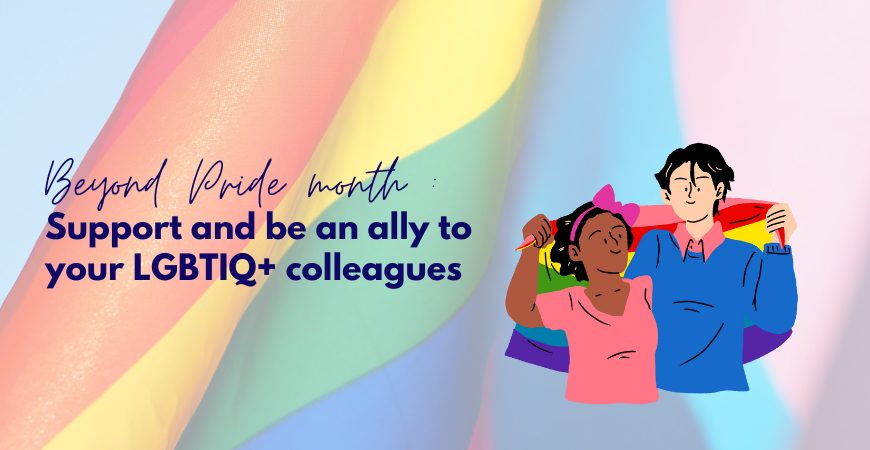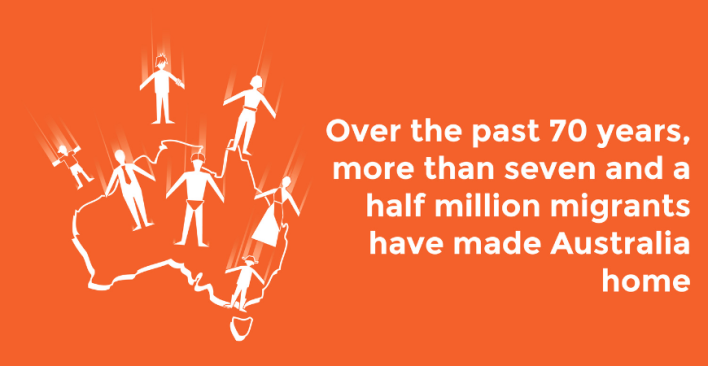Beyond Pride month – Support and be an ally to your LGBTIQ+ colleagues

Happy Pride! Pride is all about celebrating diversity, equality, self-affirmation and acceptance for all people. It’s also a time to reflect on how we have progressed in half a century and an opportunity for all to protest discrimination and violence. Though progress has been made since the 1969 Stonewall Riots, research suggests that workplaces are still failing people who identify with the LGBTIQ+ community.
You would have noticed your LinkedIn feed filled with ‘rainbow-fied’ corporate logos and social profiles, which will ultimately revert to their original state come July 1st. I’m not going to lie, I absolutely love seeing all kinds of rainbow logos across my social feeds – but, how many of these companies are actually taking action to engage and support the community? Are some of them merely profit-driven symbolic displays?
While showing support for the LGBTIQ+ community is valuable, without action, it’s just performance.
Moving beyond the realm of performative allyship and ‘rainbow-washing’ requires organisations to take the time and make the effort to educate themselves, rather than relying on LGBTIQ+ employees to do the hard work of educating their co-workers. It’s one thing to react and implement initiatives to protect those who identify with the community, but it’s another to be reactive and simply pass the mic to them.
Less talk, more action: How to best support your LGBTIQ+ colleagues
If you see something, say something.
- Stand up and stand out against discrimination. If you hear negative or uninformed comments about the LGBTIQ+ community, stand up and explain why it’s offensive and wrong. You could share something you’ve read, seen or heard that has personally helped you understand gender diversity more broadly.
- You should also call out harmful stereotyping. Explain that it contributes to creating an unsafe environment for LGBTIQ+ coworkers.
Work to uncover your unconscious bias.
- 1 in 5 LGBTIQ+ workers have been told or had coworkers imply that they should dress more feminine or masculine — compared to 1 in 24 non-LGBTIQ+ workers.
- If someone corrects you, be sure to listen, acknowledge, learn from the experience, and move the conversation on. Check your own insecurity: don’t take offence, don’t make it about you.
- Similarly, be aware of normative bias and don’t ask questions you wouldn’t normally ask a straight, cis person, e.g. “When did you decide you were heterosexual?”
Listening is key.
- As allies, one of the most powerful things you can do is listen to and affirm LGBTIQ+ voices.
- Be open-minded and willing to learn from your LGBTIQ+ coworkers. Think about how you might be able to take actions, big or small, to adjust your own behaviour and help create a more inclusive and affirming environment.
Showing true solidarity as an organisation
Commit to inclusive hiring practices and goals.
- Equity begins at the first step of the hiring process.
- Words carry so much weight and what one person may find unimportant could mean a great deal to someone else. Go through your recruitment campaigns and employment applications and see if your company still asks for a candidate’s gender. It’s not really a necessary question for most roles. If it is, make it a point to be gender-inclusive.
- Take note of your subconscious bias — reaffirm the company stance that candidates must be hired based on their merit and how they add value to the team. This sets a tone of fairness and equity in your entire process.
Intention is everything – Look at current processes.
- Build a system that can support the success of people from all kinds of backgrounds, especially those from marginalised communities.
- Ensure that the same level of fairness and equity from your recruitment campaigns flow through to your talent processes that follow in the employee lifecycle.
- Is your employee’s performance evaluated on the same types of skills they were assessed for in your hiring process?
- Are there processes and measures in place to ensure that every employee in the organisation has the same opportunity for success and growth to carry them forward?
Establish strong anti-discrimination policies and practices.
- Have clear, enforceable policies in place to ensure the workplaces are free of discrimination and microaggresions.
- Remove any unnecessary gender language. And if you haven’t done so already, add gender identity or gender expression to the list of areas in which harassment will not be tolerated.
- Be onboard and show your support — otherwise these policies will fall flat.
Continuously look for new opportunities to create safe spaces.
- Consider making single use restrooms gender neutral — instead of 1 men’s room and 1 ladies’ room, you could have 2 gender neutral rooms!
- Using gender-neutral language makes a big difference in the workplace. An example would include a simple swap of terms using ‘wife’ or ‘husband’ to ‘partner’ or ‘spouse’.
- Offer training to your teams to help them better understand the difference between sex and gender, the different types of gender, and how they can contribute to a more inclusive workplace.
Looking beyond the rainbow: Organisations leading the way
Related articles
Leave a Reply
Sign up to our newsletter
Get a weekly digest on the latest in Talent Acquisition.
Deliver this goodness to my inbox!


